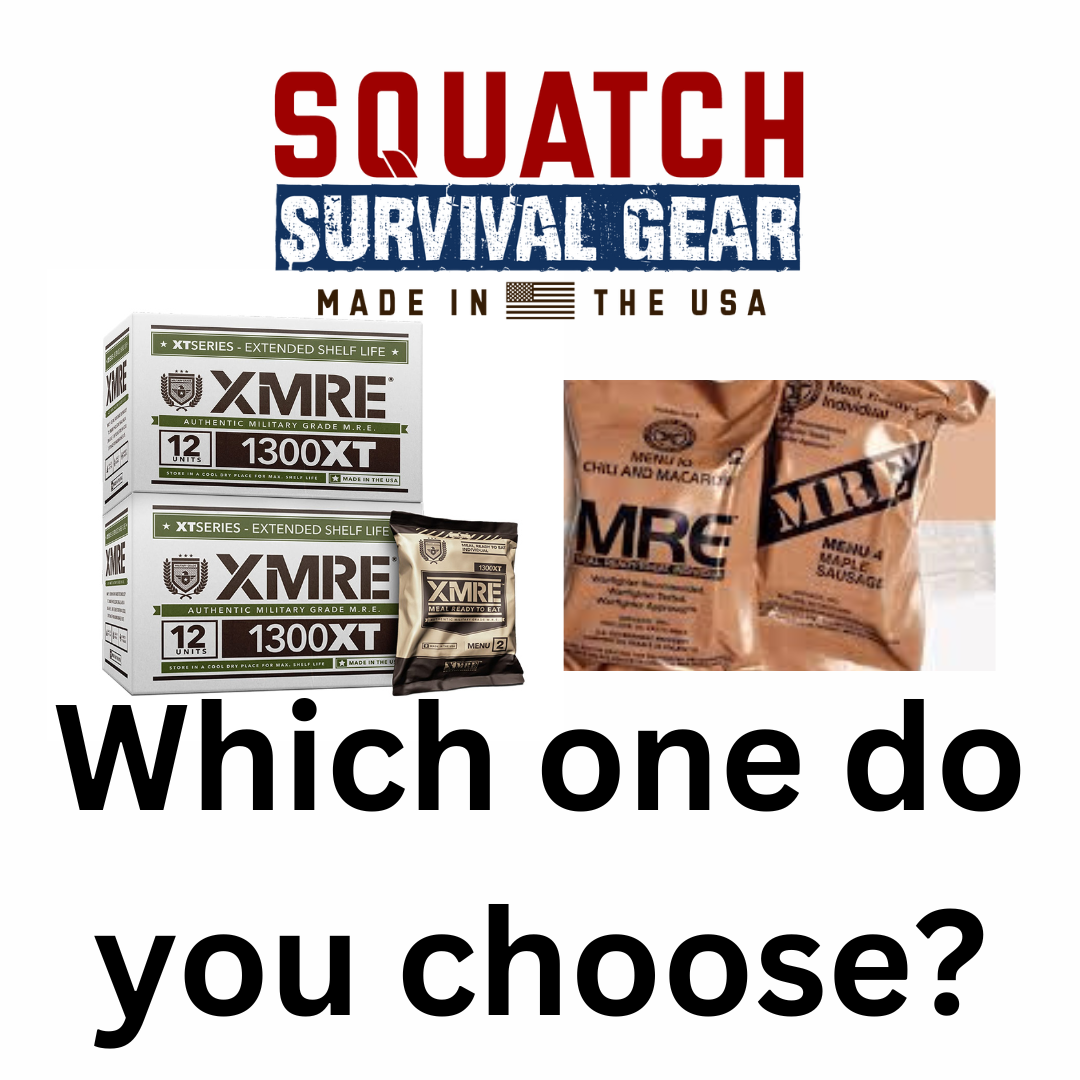When preparing for a long hike, food becomes one of the most important considerations. You need meals that are lightweight, easy to carry, nutritious, and most importantly, shelf-stable. That's where MREs (Meals Ready to Eat) and XMREs (Extended Meals Ready to Eat) come into play. But how do they differ, and which one is better for your next adventure? Here’s a closer look at the benefits of each.
What Are MREs?
MREs are military-grade, pre-packaged meals designed for soldiers in the field. Each pack contains a full meal with a variety of components, including an entrée, side dish, dessert, snacks, utensils, and an optional flameless heater for warming the food. They are calorie-dense, designed to fuel soldiers during strenuous activities, and can last up to five years when stored properly.
Benefits of MREs for Long Hikes:
- Convenience: Each MRE pack is a complete meal, saving you from the hassle of planning out individual snacks or courses.
- Durability: The packaging is robust and designed to withstand harsh conditions, ensuring that your food stays intact even during rough terrain.
- Nutritionally Balanced: MREs are crafted to provide balanced nutrition, with high-calorie content, perfect for sustaining energy levels on long hikes.
- Variety: There are a variety of flavors and meal types to choose from, so you won’t get bored eating the same thing over multiple days.
- Heater Included: The flameless heater included in MREs is especially useful for hikers, as it allows you to have a hot meal without needing to set up a stove. This makes them ideal for packing in your hunting backpack or survival backpack for backcountry treks.
What Are XMREs?
XMREs are similar to MREs but have some distinctions in terms of packaging and usage. XMREs are civilian versions of the traditional military MREs but are often marketed toward preppers, outdoor enthusiasts, and emergency response teams. They also typically have a shelf life of around 5 years and come with all the same meal components.
Benefits of XMREs for Long Hikes:
- Portion Sizes: XMREs tend to be more customized for civilian consumption. For example, you may find smaller or more streamlined portions that fit the needs of a hiker better than a full-sized MRE meant for soldiers.
- Variety of Options: XMREs come in various configurations—from full meals with heaters to lighter versions with fewer components. This flexibility allows hikers to select exactly what they need without unnecessary extras.
- Non-Toxic Heater: One of the standout features of XMREs is the non-toxic heater. This is an excellent choice for hikers who want to ensure safety and environmental sustainability while heating their meals—ideal for survival backpacks and hunting gear.
- Availability: XMREs are more readily available to the general public and are sold in various outlets geared toward outdoors and emergency preparedness, making them easier to purchase in bulk.
- Customization: Many XMRE providers offer customizable options, allowing you to choose exactly which entrees, sides, and snacks you want to bring along. This can be an advantage if you have dietary restrictions or simply prefer certain types of food.
- Affordability: XMREs can sometimes be more cost-effective, especially if you buy them in bulk or choose simpler meal packs.
Key Differences: MREs vs XMREs
- Target Audience: MREs are designed for military use, while XMREs are targeted toward civilians, making XMREs generally more accessible and customizable for outdoor enthusiasts.
- Packaging: Both MREs and XMREs offer durable packaging, but XMREs might have more options tailored for different activities, such as long hikes.
- Meal Contents: MREs typically contain more components, which can be both an advantage (more calories) and a drawback (more weight) for hikers. XMREs often provide more streamlined meal options better suited for civilian activities.
- Heater Safety: XMREs come with non-toxic heaters, offering an additional level of safety for environmentally conscious hikers. These are perfect for stuffing in your survival backpack or hunting backpack to ensure you always have a warm meal.
Which Is Best for Your Hike?
Ultimately, the choice between MREs and XMREs depends on your specific needs for the hike. If you're planning an extended trek and need a heavy calorie intake to fuel physically demanding activities, MREs are an excellent choice. The variety and durability they offer can make them a reliable option for extended outdoor adventures, particularly if you're carrying them in a hunting pack for multiple days.
On the other hand, if you’re looking for a more lightweight, customizable, and possibly cheaper option, XMREs might be the better choice. Their flexibility allows you to tailor your meals to your exact requirements, which can be an advantage during shorter hikes or for those with dietary preferences.
Whichever you choose, both options provide the convenience of ready-to-eat meals without the need for cooking, making them perfect for hikers looking to stay fueled without sacrificing time or energy on meal prep. Whether you're packing your hunting backpack for a long trip into the wilderness or your survival backpack for an extended hike, MREs and XMREs offer dependable, high-quality fuel for the journey.

